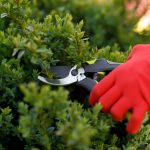How Do I Become An Arborist?
So you’re thinking of becoming an arborist, huh? Excellent! It’s a wonderfully fulfilling, rewarding, and challenging occupation. And fortunately, there is always a need for arborists — certified arborists, especially. So how does one become an arborist? Let’s explore this question.
International Society of Arboriculture
At Inexpensive Tree Care, we’re captained by a certified arborist. Our services include tree removal, tree pruning, tree trimming, dangerous tree removal, stump grinding, and more. Without the leadership of a certified arborist, we would not be able to perform many of the core functions of our business. And we certainly wouldn’t be able to perform them so well.
Arborists do many of the labor-intensive tasks listed above. But even more, they’re responsible for monitoring soil conditions and utilizing their knowledge of tree anatomy, botany, and plant biology in order to diagnose problems, including tree diseases, apply pesticides, if necessary, and to provide the best service possible for clients.
And the trees, of course.
Certification
What is a certified arborist? Broadly speaking, it’s someone who has been certified by the International Society of Arboriculture.
According to the ISA itself, the society “exists so that professionals, allied professionals, public officials, and consumers worldwide recognize the economic, environmental, and societal benefits and values of trees and their care at a cost that demonstrates the wise stewardship of resources.”
The ISA has several areas of focus.
- Research
- Public Awareness
- Membership
- Professional Development
- Promoting the Profession
- Safety
“Earning an ISA credential is a voluntary activity,” the ISA writes, “that demonstrates you have the knowledge and skills to properly care for trees, as well as a high level of dedication to your profession and your community. ISA Credential holders understand the importance of continued education to increase their expertise and advance their careers.”
Becoming An Arborist
Becoming an arborist means more than just excelling in a rigorous training regimen that includes some combination of (among other things) experience, academic degrees, and certification exams. It means taking certified arborist exams and adhering to a code of ethics. It also means having at least a basic understanding of and proficiency with mathematics and physics, especially when a large tree needs to be removed or trimmed.
The first thing you must do to earn an ISA credential is to choose a specific credential. Your experience in the field (or in the trees, as it were) should help you make this decision.
The ISA certification process includes pathways for master arborists, utility specialists, municipal specialists, tree worker climber specialists, and tree worker aerial lift specialists. The Pacific Northwest ISA branch has a lot of good information on this topic. You can find it here.
It may be helpful for you to consider studying arboriculture at a university or local college. There is a diverse range of studies related to the field, including urban forestry, botany, ecology, and the soil sciences.
Working Arborists
The most successful arborists have years of full-time work experience — i.e., lots of on-the-job training in all aspects of arboriculture. These arborists have started their own tree care companies and landscaping companies. (See our blog post regarding the differences between these fields here.)
Long story short: If you crave an exciting career as an ISA certified arborist or an ISA certified tree worker, then you need education, training, and experience in arboriculture so that you’re ready to take the ISA-based exam.
We wish you the best of luck!




